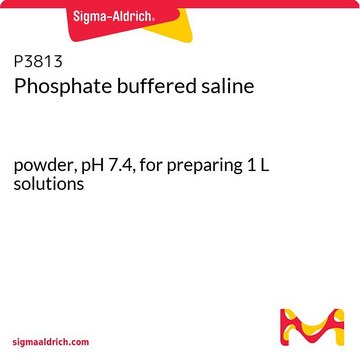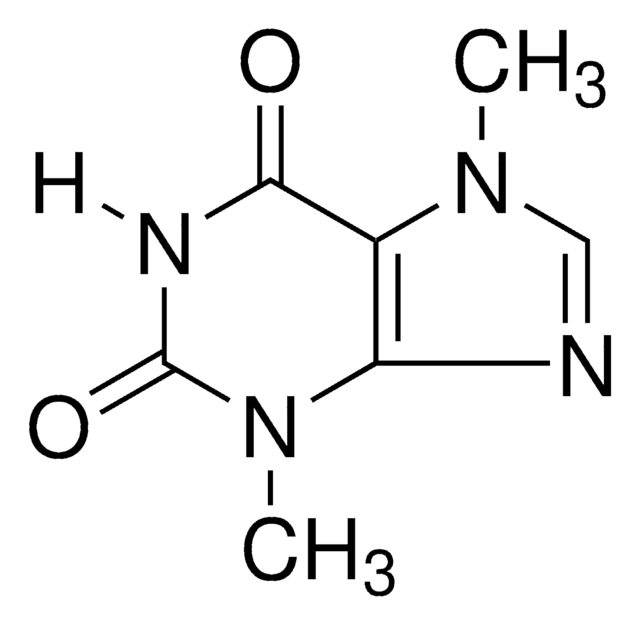S7757
Sodium thiocyanate
reagent grade, 98-102% (titration)
Sinonimo/i:
Sodium isothiocyanate, Sodium rhodanate, Sodium rhodanide, Sodium sulfocyanate
About This Item
Prodotti consigliati
Grado
reagent grade
Saggio
98-102% (titration)
Stato
powder
pH
4.8 (20.1 °C, 1070 g/L)
Punto di fusione
287 °C (dec.) (lit.)
Stringa SMILE
[Na]SC#N
InChI
1S/CHNS.Na/c2-1-3;/h3H;/q;+1/p-1
VGTPCRGMBIAPIM-UHFFFAOYSA-M
Cerchi prodotti simili? Visita Guida al confronto tra prodotti
Applicazioni
- Effect of Sodium Thiocyanate and Sodium Perchlorate on Poly(N-isopropylacrylamide) Collapse: This research investigates the effects of sodium thiocyanate on the collapse of poly(N-isopropylacrylamide). The study provides insights into the molecular interactions and thermodynamic behavior of this polymer in the presence of thiocyanate ions (Pica & Graziano, 2020).
Avvertenze
Danger
Indicazioni di pericolo
Classi di pericolo
Acute Tox. 4 Dermal - Acute Tox. 4 Inhalation - Acute Tox. 4 Oral - Aquatic Chronic 3 - Eye Dam. 1
Rischi supp
Codice della classe di stoccaggio
13 - Non Combustible Solids
Classe di pericolosità dell'acqua (WGK)
WGK 1
Punto d’infiammabilità (°F)
Not applicable
Punto d’infiammabilità (°C)
Not applicable
Scegli una delle versioni più recenti:
Possiedi già questo prodotto?
I documenti relativi ai prodotti acquistati recentemente sono disponibili nell’Archivio dei documenti.
I clienti hanno visto anche
Il team dei nostri ricercatori vanta grande esperienza in tutte le aree della ricerca quali Life Science, scienza dei materiali, sintesi chimica, cromatografia, discipline analitiche, ecc..
Contatta l'Assistenza Tecnica.









